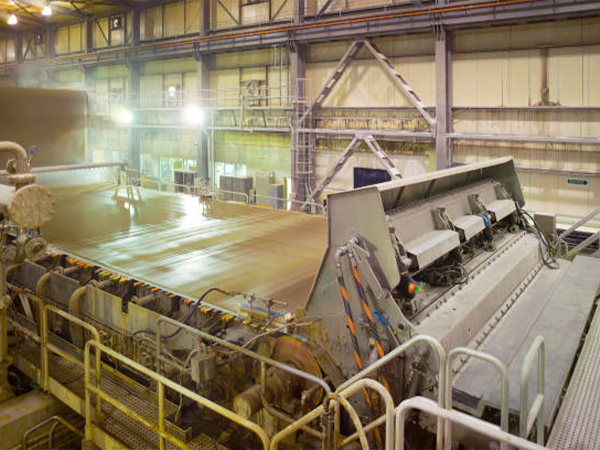
A defoamer for paper industry applications serves as a chemical additive that controls unwanted foam during the papermaking process. Foam can disrupt operations, lower product quality, and create safety hazards. Defoamers such as Fatty Alcohol-Based Defoamer, Polyether-Based Defoamer, and Silicone-Based Defoamer act by breaking up existing foam and preventing new bubbles from forming. Effective foam control ensures smooth machine operation and helps deliver consistent, high-quality paper products.
Key Takeaways
- Defoamers control and remove foam that disrupts papermaking and lowers product quality.
- Foam forms due to chemical additives and mechanical agitation during paper production.
- Excessive foam causes defects, slows production, damages equipment, and raises costs.
- Different defoamer types like silicone, oil-based, and fatty alcohol offer unique benefits.
- Defoamers work by breaking existing foam bubbles and preventing new foam from forming.
- Applying defoamers at key stages like pulp washing and wet end ensures smooth operations.
- Choosing the right defoamer and dosing carefully improves paper quality and process efficiency.
- Eco-friendly defoamers help mills meet environmental rules and support sustainable production.
Foam Issues in Papermaking

Causes of Foam
Foam develops in papermaking due to a combination of chemical and mechanical factors. The process introduces many substances and conditions that encourage foam formation.
- Chemical causes include the presence of surface-active materials such as deinking agents, black-liquor carryover, and excessive rosin soap size. Wet-end additives, including some biocides, can stabilize foam. Overdosing water-soluble polymers like cationic starch and wet-strength resins also supports foam stability. Acidic conditions, especially when the furnish contains calcium carbonate, release carbon dioxide, which increases dissolved and entrained air, further promoting foam.
- Mechanical causes arise from the operation of equipment. Leaky pump seals, turbulence in the headbox, and agitation during pulp washing introduce air into the system. Improper adjustment of pulp-washing systems and hydrofoils can worsen the problem. The combination of water, air, agitation, and stabilizing chemicals creates ideal conditions for foam.
Tip: Mechanical degassing alone often cannot control foam. Chemical defoamers, such as silicone, fatty alcohol, and polyether types, are widely used for effective foam management.
Effects on Production
Quality Impact
Foam disrupts several stages of papermaking, including pulping, washing, and sheet formation. Excessive foam slows drainage, leading to poor sheet formation and inconsistent paper thickness. The presence of foam can cause defects such as poor surface appearance and inadequate adhesion between layers. These issues often result in inferior or rejected products, reducing overall product quality.
Equipment Problems
Foam causes operational disruptions throughout the mill. Pumps may experience cavitation, which damages equipment and reduces efficiency. Foam buildup can lead to bacterial growth and increased deposits on machinery. Overflow from excessive foam may cause safety hazards and require additional cleaning and maintenance. These problems increase downtime and maintenance costs.
Operational and Economic Risks
Uncontrolled foam leads to slower production rates and higher chemical and energy consumption. Mills may face increased costs due to wasted raw materials and additional cleaning requirements. Safety risks rise when foam overflows or causes slippery surfaces. Inconsistent product quality can result in customer complaints and rejected shipments, impacting the mill’s reputation and profitability.
- Key risks include:
- Reduced production efficiency
- Increased operational costs
- Higher risk of equipment failure
- Safety hazards for workers
Effective foam control remains essential for maintaining smooth operations, protecting equipment, and ensuring high-quality paper output.
Defoamer for Paper Industry
What Is a Defoamer?
A defoamer for paper industry applications refers to a chemical additive that reduces and prevents foam formation in industrial liquids. In papermaking, foam can disrupt production, lower product quality, and cause equipment issues. Defoamers, sometimes called anti-foaming agents, possess surface-active properties and remain partly insoluble in the foaming medium. This allows them to destabilize foam films, causing air bubbles to rupture and foam to break down. Mills use defoamers at various stages, including pulping, papermaking, coating, and wastewater treatment, to quickly eliminate foam and maintain operational efficiency. The right defoamer for paper industry processes ensures smooth machine operation and consistent paper quality.
Note: Not all defoamers are the same. They differ in chemical composition and application, such as silicone-based, oil-based, and water-based types. Selecting the appropriate defoamer for paper industry needs is crucial for optimal performance.
How Defoamers Work
Breaking Down Foam
Defoamers act through several chemical and physical mechanisms to disrupt and eliminate foam. They lower the surface tension at the liquid-air interface, which weakens foam bubbles. Active ingredients, often surfactants or hydrophobic particles, penetrate and disrupt the bubble film structure. This action causes bubbles to break and collapse. Hydrophobic particles can bridge between bubbles, physically puncturing the film and initiating collapse. Defoamers also promote liquid drainage from foam films, reducing their thickness below the critical rupture level. These combined actions ensure rapid foam breakdown in the papermaking process.
- Defoamers reduce local surface tension by spreading on foam films and thinning them.
- They disrupt surface elasticity, causing liquid flow that ruptures foam films.
- Hydrophobic particles in the defoamer physically puncture bubble films.
- The product displaces foam stabilizers at the air-liquid interface, forming weaker films.
Preventing New Foam
In addition to breaking down existing foam, defoamers inhibit the formation of new bubbles. They interfere with bubble generation processes by interacting with components in the liquid. Some defoamers increase surface viscosity or reduce film elasticity, making it difficult for stable foam to form. By redistributing surfactants at the liquid-air interface, defoamers equalize surface tension and reduce foam stability. Molecular diffusion of defoamer molecules into foam film bilayers further reduces cohesion, preventing new foam from developing.
Tip: Modern defoamer for paper industry formulations often include advanced ingredients that both eliminate existing foam and prevent new foam from forming, ensuring continuous process stability.
Defoamer vs. Antifoam
Many in the industry use the terms “defoamer” and “antifoam” interchangeably, but they have subtle differences in function and application. Both types may share similar chemical compositions, such as silicone-based or non-silicone-based ingredients, including mineral oils, hydrophobic silica, waxes, fatty acids, or fatty alcohols. However, their primary roles differ:
| Aspect | Antifoam Agents | Defoamer Agents |
|---|---|---|
|
Composition |
Silicone-based or non-silicone-based; includes silicones, organic compounds like alcohols, fatty acids, esters. Designed to spread quickly over liquid surfaces. |
Silicone-based or non-silicone-based; made from liquids such as mineral oils or silicones combined with hydrophobic solids like hydrophobic silica, waxes, fatty acids, or fatty alcohols. Must be partly insoluble to the medium. |
|
Mechanism |
Prevent foam formation by entering and destabilizing bubble walls before foam is visible; spreads over liquid surface to inhibit bubble creation. |
Eliminate existing foam by spreading over foam bubbles causing them to burst and collapse; breaks down foam that has already formed. |
|
Application Timing |
Added proactively at the start of the process to prevent foam formation. |
Used reactively to remove foam that has already formed during the process. |
|
Paper Industry Use |
Used to prevent foam during paper-making processes, ensuring smooth operation and consistent product quality. |
Used to break down and remove foam that has formed, maintaining production rates and reducing maintenance issues. |
A defoamer for paper industry operations often serves both as a preventive and corrective agent, depending on the formulation and application timing. Mills may select a product labeled as either defoamer or antifoam, but understanding the distinction helps optimize foam control strategies.
Note: Recent advancements in defoamer for paper industry formulations focus on sustainability and regulatory compliance. Manufacturers now offer bio-based and eco-friendly options that maintain effective foam control while reducing environmental impact.
Types of Defoamers
Silicone-Based
Silicone-based defoamers play a leading role in the paper industry. Their unique chemical structure, featuring low surface tension, allows them to break and suppress foam efficiently. Manufacturers often select silicone-based defoamers for pulp washing, bleaching, and wastewater treatment. These products work well at low dosages, making them cost-effective and environmentally friendly.
| Advantages in Papermaking Applications | Disadvantages in Papermaking Applications |
|---|---|
|
Outstanding defoaming effect and long duration in pulping process |
Silicone oil can cause spots and poor sizing if emulsification is not well controlled |
|
Good dispersibility, chemical and thermal stability |
Not favored in papermaking section due to silicone oil affecting production quality |
|
Low dosage and cost-effective in pulping |
Other defoamers (high-carbon alcohol, polyether) preferred in papermaking for better compatibility |
|
Reduces adhesion in pulp, minimizing resin obstacles |
Temperature sensitivity affects defoaming and degassing efficiency |
|
Silicone defoamers may cause defects if emulsification technology is inadequate |
Silicone-based defoamers offer strong performance in pulp processing. They resist heat and chemicals, and they remain non-toxic. However, improper emulsification can lead to defects such as spots or poor sizing on finished paper. For this reason, mills often use silicone defoamers in the pulping stage but may switch to other types during sheet formation.
Tip: Proper emulsification technology is essential for maximizing the benefits of silicone-based defoamers and avoiding production defects.
Oil-Based
Oil-based defoamers also hold a significant share in the paper industry. These products typically contain mineral oils, fatty acid amides, or polyethers. Oil-based defoamers excel at both breaking and suppressing foam, especially when formulated with emulsified silicone oil.
| Aspect | Oil-Based Defoamers (including silicone-based) | Other Types (mineral oil, sulfonated vegetable oil, alcohol) |
|---|---|---|
|
Foam Suppression Efficiency |
High, especially silicone oil emulsions with strong foam breaking and foam suppression |
Low surface activity and defoaming efficiency |
|
Compatibility with Paper Production |
Good compatibility with paper sizing, no adverse effects on paper surface quality |
Poor compatibility, may affect paper quality |
|
Application Range |
Broad-spectrum, versatile, suitable for various paper-making stages |
Narrow application range |
Oil-based defoamers provide broad compatibility with paper sizing and do not harm paper surface quality. Their versatility makes them suitable for multiple stages in papermaking. Mills value their strong foam suppression and breaking abilities, especially in systems with persistent foam. However, the effectiveness of oil-based defoamers depends on the stability of their emulsions.
Note: Emulsification quality directly impacts the performance of oil-based defoamers. Stable emulsions ensure consistent foam control throughout the process.
Fatty Alcohol-Based
Fatty alcohol-based defoamers represent another important category in the paper industry. These products use high-carbon alcohols as their active ingredients. Mills often choose fatty alcohol-based defoamers for their good compatibility with wet-end additives and their ability to minimize negative effects on paper quality.
Fatty alcohol-based defoamers work by spreading quickly across foam films, reducing surface tension, and causing bubbles to collapse. They perform well in both acidic and alkaline environments, making them suitable for a variety of papermaking conditions. Their biodegradable nature also supports mills seeking sustainable and non-toxic solutions.
- Key benefits of fatty alcohol-based defoamers:
- Effective foam control in wet-end and coating applications
- Minimal impact on paper sizing and surface properties
- Biodegradable and environmentally friendly
The growing demand for sustainable papermaking drives increased use of fatty alcohol-based and other biodegradable defoamers. Mills that prioritize product quality and environmental compliance often select these options for critical process stages.
Callout: The paper and pulp industry continues to lead the global defoamer market, with silicone-based, oil-based, and fatty alcohol-based products forming the backbone of foam control strategies. Each type offers unique advantages, allowing mills to tailor their approach for optimal results.
Water-Based and Glycol-Based
Water-based and glycol-based defoamers play a vital role in modern papermaking. These defoamers use water or glycols as their primary carriers, making them distinct from oil- or silicone-based products. Mills often choose these types for their compatibility with a wide range of process chemistries and their ability to deliver effective foam control without introducing unwanted residues.
Water-based defoamers contain a blend of surfactants, dispersants, and sometimes small amounts of oils or waxes. Glycol-based defoamers use glycols, such as propylene glycol or polyethylene glycol, as the main active ingredient. Both types excel in systems where oil-based products might cause contamination or interfere with paper properties.
Key features of water-based and glycol-based defoamers:
- Low toxicity and minimal environmental impact
- Excellent compatibility with wet-end additives and coatings
- Fast-acting foam suppression and prevention
- Easy to disperse in both hot and cold water systems
Papermakers value these defoamers for their ability to control foam in sensitive applications. For example, water-based defoamers work well in white water loops, where recycled process water can accumulate surfactants and other foam-promoting substances. Glycol-based defoamers perform reliably in coating kitchens and size press operations, where precise control over surface properties is essential.
Tip: Water-based and glycol-based defoamers often serve as the preferred choice for mills seeking to minimize volatile organic compound (VOC) emissions and comply with strict environmental regulations.
A comparison of water-based and glycol-based defoamers highlights their operational strengths:
| Attribute | Water-Based Defoamers | Glycol-Based Defoamers |
|---|---|---|
|
Main Carrier |
Water |
Glycol (e.g., propylene glycol) |
|
Environmental Profile |
Low VOC, biodegradable |
Low VOC, biodegradable |
|
Application Areas |
Wet-end, white water, wastewater |
Coating, size press, wet-end |
|
Compatibility |
High with most additives |
High with coatings and starch |
|
Residue Risk |
Minimal |
Minimal |
Manufacturers continue to innovate in this category. Many new formulations use sustainable raw materials and avoid hazardous substances. This shift supports mills in meeting both operational and environmental goals. By choosing water-based or glycol-based defoamers, papermakers can reduce foam-related downtime, improve product quality, and support a safer workplace.
Water-based and glycol-based defoamers help the paper industry move toward greener production. Their use aligns with global trends favoring sustainable, efficient, and compliant manufacturing practices.
Defoamer Application

Key Stages
Pulp Washing
Pulp washing stands as one of the first points where mills introduce defoamers. During this stage, foam forms easily due to agitation and the presence of surfactants from pulping chemicals. Operators add defoamers before the pulp slurry enters the stock chest or paper machine. This step helps prevent foam from carrying over into later processes. By controlling foam early, mills achieve better drainage and reduce the risk of defects in the final product.
Wet End
The wet end of the papermaking process often experiences significant foam formation. Here, the pulp mixes with various additives, which can stabilize foam. Defoamers are applied directly to the wet end to break down existing foam and prevent new bubbles from forming. This action ensures smooth sheet formation and consistent paper thickness. Mills adjust the dosage based on the severity and stability of the foam.
White Water System
The white water system recycles process water within the mill. Surfactants and dissolved air in this loop can promote persistent foam. Defoamers play a crucial role in this stage by suppressing foam in the white water, which helps maintain efficient water reuse and prevents operational disruptions. Effective foam control in the white water system supports both production efficiency and environmental goals.
Wastewater Treatment
Auxiliary systems like wastewater treatment also require foam control. Biological and chemical reactions in treatment tanks often generate foam, which can overflow and cause safety hazards. Mills use defoamers to manage foam in these systems, ensuring compliance with environmental regulations and maintaining safe operations.
Tip: Applying defoamer for paper industry processes at multiple stages helps mills avoid production delays, equipment issues, and quality defects.
Dosing Methods
Operators select dosing methods based on the process stage and foam severity. Common approaches include continuous dosing into the process stream or targeted application onto foam surfaces. Automated dosing systems allow precise control, adjusting the amount of defoamer in response to real-time foam levels. Proper dosing ensures effective foam suppression without overdosing, which can lead to product contamination or increased costs.
Performance Factors
Several factors influence the effectiveness of defoamers in papermaking systems:
- Surface tension and interfacial tension of the liquid determine how easily foam forms and how well the defoamer works.
- Temperature impacts efficiency; adding defoamer before the system reaches 60°C often yields better results.
- The presence of chemical additives in the pulp can increase foam formation, affecting defoamer requirements.
- The type of foam—surface, dissolved, or fiber-adsorbed—changes how the defoamer performs.
- Physical and chemical properties of the defoamer, such as low surface tension, dispersibility, and stability, are essential for success.
- Dosage and site-specific conditions require optimization through testing.
- Silicone defoamers often provide superior control due to their stability and environmental safety.
Selecting the right defoamer for paper industry applications and optimizing its use at each stage ensures smooth operations, high product quality, and regulatory compliance.
Benefits of Defoamers
Product Quality
Defoamers play a critical role in maintaining and improving the quality of paper products. By controlling foam at every stage, they help mills produce sheets with fewer defects and more consistent properties. Foam can trap air and impurities, leading to flaws such as pinholes, uneven surfaces, and weak spots in the final product. Defoamers eliminate these risks by breaking down bubbles and preventing new foam from forming.
The following table highlights how defoamers contribute to product quality at different stages:
| Application Stage | Role of Defoamers | Benefits to Final Product Quality |
|---|---|---|
|
Pulping (brown stock washing, bleach plant, screen room) |
Control foam, enhance drainage, minimize carry-over of impurities |
Improved washing efficiency, reduced flaws in paper sheet |
|
Paper Machine |
Reduce entrained air, minimal impact on sizing |
Better paper quality, smoother operation, reduced defects |
|
Coating and Effluent Treatment |
Foam control to prevent process disruptions |
Enhanced operational reliability, reduced downtime |
|
General |
Reduce foam caused by chemicals like rosin, tall oil, lignin |
Improved pulp quality, reduced chemical consumption, faster production |
Defoamers also prevent foam formation upstream and quickly reduce existing foam, which minimizes deposits and speeds up production. They improve pulp quality by reducing the need for excess washing water and bleaching chemicals. Silicone defoamers, in particular, resist extreme chemical and temperature conditions, ensuring stable processes and consistent results. These benefits lead to higher productivity and more reliable manufacturing operations.
Process Efficiency
Efficient foam control directly impacts the productivity and cost-effectiveness of paper mills. Defoamers reduce foam-related slowdowns and stoppages, allowing machines to run at optimal speeds. Mills experience fewer interruptions, which leads to higher output and lower maintenance needs.
Key improvements in process efficiency include:
- Increased productivity by minimizing foam-related delays
- Better pulp and paper quality through the elimination of foam defects
- Reduced downtime and maintenance, supporting continuous operations
- Cost savings from lower waste and improved efficiency
- Maintained optimal flow rates in pulp processing and smoother machine operation
Defoamers also enhance water recovery rates by reducing surface and entrained foam. They protect equipment from foam damage and maintain consistent flow during pulping, bleaching, and effluent treatment. These improvements contribute to sustainability and cost efficiency, as mills use fewer chemicals and resources.
Tip: Tailored defoamer solutions and on-site support help mills optimize performance and achieve long-term operational stability.
Safety and Compliance
Defoamers contribute significantly to workplace safety and regulatory compliance in the paper industry. Foam overflow can create hazardous working conditions, such as slippery floors and obstructed walkways. By preventing foam buildup, defoamers help maintain a safer environment for workers.
- Defoamers reduce the risk of equipment failures and operational interruptions, supporting safer and more reliable processes.
- In wastewater treatment, defoamers prevent foam overflow that could lead to environmental contamination, helping mills meet environmental regulations.
- Water-based defoamers offer eco-friendly properties, supporting sustainability goals and regulatory adherence.
Overall, effective foam control ensures smooth operations, maintains product quality, and reduces environmental impact. Mills that use defoamers can more easily comply with safety and environmental regulations, protecting both their workforce and the surrounding ecosystem.
Environmental Impact
Environmental responsibility has become a central concern in the paper industry. Defoamers, while essential for process efficiency, can affect the environment in different ways depending on their chemical composition. Mills now face increasing pressure to select products that not only control foam but also minimize ecological harm.
Water-based defoamers have gained popularity due to their eco-friendly profile. These products break down easily in natural environments and show low toxicity to aquatic organisms. Many mills in regions with strict environmental regulations choose water-based defoamers to meet discharge standards and reduce their ecological footprint. Bio-based defoamers, made from renewable resources, also offer high biodegradability—often reaching 80–85%. These options align with global sustainability goals and help mills comply with international ecolabels.
Silicone-based defoamers remain widely used for their strong performance and stability. However, they contain persistent compounds, such as D4 and D5 cyclosiloxanes, which resist natural breakdown and can accumulate in the environment. Regulatory agencies in the European Union and North America have begun phasing out certain silicone-based products due to concerns about toxicity and sludge formation in wastewater treatment. Mills in these regions must reformulate or replace silicone-based defoamers to meet new standards.
Oil-based defoamers, while effective in high-shear environments, present additional environmental challenges. These products can leave residues that harm water quality and aquatic life. As a result, many mills now transition away from oil-based defoamers in favor of more sustainable alternatives.
The following table summarizes the environmental impact and regulatory trends for common defoamer types:
| Aspect | Silicone-based Defoamers | Bio-based Defoamers | Water-based Defoamers | Oil-based Defoamers |
|---|---|---|---|---|
|
Environmental Impact |
Persistent toxins; regulatory phase-outs in EU |
High biodegradability (80–85%); low impact |
Biodegradable; low aquatic toxicity |
Environmental concerns; declining use |
|
Regulatory Compliance |
Facing restrictions in EU and North America |
Meet strict regulations; favored by ecolabels |
Comply with strict discharge norms |
Limited use in regulated markets |
|
Market Trends |
Still used in emerging markets |
Growing adoption in regulated regions |
Increasing demand in eco-conscious markets |
Gradual replacement by sustainable options |
|
Biodegradability |
Low |
High |
High |
Moderate to low |
|
Wastewater Impact |
Increases sludge; toxic to aquatic life |
Reduces sludge; supports treatment |
Supports aeration; low toxicity |
Oil residues harm water quality |
🌱 Note: Mills that adopt bio-based or water-based defoamers support cleaner production and help protect local ecosystems. These choices also prepare companies for future regulatory changes and growing consumer demand for sustainable paper products.
The shift toward environmentally friendly defoamers reflects a broader industry commitment to sustainability. By choosing products with high biodegradability and low toxicity, mills can maintain efficient operations while reducing their environmental impact.
Practical Tips
Selection Criteria
Selecting the right defoamer for a papermaking process requires careful evaluation. Mills must consider several factors to ensure optimal foam control and product quality.
- Compatibility Testing: Mills should verify that the defoamer does not cause precipitation, deposition, or surface defects. The product must disperse well but remain insoluble enough to interact with foam effectively.
- Cost-Benefit Analysis: Operators need to balance dosage requirements, transportation costs, production impact, and supplier support. A thorough analysis helps achieve the best performance at a reasonable cost.
- Scale-Up Field Testing: Mills should validate defoamer performance under real production conditions. Supplier assistance during trials ensures that foam control and product quality meet expectations.
- Continuous Evaluation: Regular monitoring of foam control efficiency and product quality is essential. Mills must adapt to changes in process chemistry or operating conditions to maintain long-term performance.
The following table compares common defoamer types and their suitability for different papermaking needs:
| Criteria | Silicone-Based Defoamer | Polyether-Based Defoamer | Fatty Alcohol-Based Defoamer |
|---|---|---|---|
|
Chemical Composition |
Silicone oil, emulsifier, hydrophobic silica |
Polyether compounds, stabilizers |
Fatty alcohols, emulsifiers, dispersants |
|
Foam Breaking Efficiency |
Excellent |
Limited |
Good |
|
Foam Suppression Strength |
Good |
Very Strong |
Moderate to Strong |
|
Application Systems |
Aqueous and oil-based |
Mainly aqueous |
Mainly aqueous |
|
Recommended Usage Time |
Before or after foaming |
Before foaming |
Before foaming or during operation |
|
Toxicity & Safety |
Non-toxic, odorless, no irritation |
Generally safe |
Low toxicity, environmentally friendly |
|
Typical Application Issues |
Emulsification instability may reduce performance |
Weak foam-breaking ability |
May require higher dosage for strong foam loads |
|
Industry Applications |
Paper, textiles, coatings, wastewater, petrochemical |
Water-based paints, adhesives, detergents |
Paper, water treatment, agriculture, fermentation |
For wet-end foam control, mills often select silicone or polyether defoamers for fast action and compatibility. Polyether defoamers perform well in pulp processing and recycled fiber systems. Fatty alcohol defoamers suit coating kitchens and white water treatment, especially when clean decomposition and low chemical oxygen demand (COD) are priorities.
Dosage and Monitoring
Proper dosing and monitoring ensure effective foam control without negative side effects. Mills should start with the minimum effective dosage and adjust based on real-time foam levels. Automated dosing systems can help maintain consistent application and reduce waste. Operators must monitor the impact of defoamer on other additives, such as sizing agents and dry strength agents, to avoid adverse interactions. Regular checks of foam levels, air content, and product quality help maintain stable operations.
Tip: Adding defoamer before the system reaches high temperatures (typically below 60°C) often improves efficiency and reduces the risk of overdosing.
Troubleshooting
When defoamer-related issues arise, mills can follow a systematic approach to resolve them:
- Test the air content in the headbox furnish to determine the required defoamer dosage.
- Adjust the dosage to the minimum level needed for effective air control.
- Avoid overdosing, as this can cause persistent microscopic foam bubbles and deposit problems.
- Add defoamer in the thin-stock loop, including white water silos and deculators, to eliminate air from the furnish.
- Monitor the impact of defoamer on other additives to prevent negative effects on sizing and strength.
- Use talc and detackifiers as needed to manage stickies and deposits related to defoamer use.
Regular troubleshooting and process adjustments help mills maintain efficient foam control and high-quality paper production.
Regulatory Considerations
Regulatory compliance shapes the selection and use of defoamers in the paper industry. Mills must ensure that every chemical additive, including defoamers, meets strict safety and environmental standards. These regulations protect both consumers and the environment, especially when paper products come into contact with food.
In the United States, the Food and Drug Administration (FDA) sets clear guidelines for defoamers used in paper and paperboard. The FDA’s Code of Federal Regulations (CFR) outlines which substances are permitted and under what conditions. The following table summarizes the main regulatory sections relevant to defoamers in the paper industry:
| Regulatory Section | Application Area | Description |
|---|---|---|
|
21 C.F.R. Part 176 |
General |
Covers indirect food additives for paper and paperboard components used in food contact applications. |
|
Section 176.200 |
Coatings |
Lists substances permitted as defoamers for paper coatings; these defoamers must comply with migration limits to food. |
|
Section 176.210 |
Wet-end Manufacture |
Lists substances allowed as defoamers in the wet-end process of paper production; these are not intended to remain in the finished product at significant levels. |
|
Section 176.170 |
Packaging Aqueous/Fatty Foods |
Regulates substances for uncoated/coated paper surfaces in contact with aqueous and fatty foods. |
|
Section 176.180 |
Packaging Dry Foods |
Regulates substances for uncoated/coated paper surfaces in contact with dry foods. |
|
Sections 181.30 & 182.90 |
Prior Sanctioned and GRAS Substances |
Lists substances generally recognized as safe or prior sanctioned for use in paper. |
The FDA requires that defoamers used in coatings (Section 176.200) must not migrate into food above specified limits. Defoamers approved for wet-end processes (Section 176.210) cannot be used in coatings unless they have been proven non-migratory. Each application demands careful evaluation of both migration and toxicity. Mills must document compliance and conduct testing when using defoamers in products intended for food contact.
⚠️ Note: Defoamers that meet FDA requirements for one application may not automatically qualify for another. Always verify the intended use and regulatory status before introducing a new defoamer into production.
In the European Union, no explicit regulatory standards exist for defoamers in the paper industry. However, mills must still comply with broader chemical safety laws, such as REACH (Registration, Evaluation, Authorisation, and Restriction of Chemicals). These laws require mills to assess the safety of all chemical additives, including defoamers, and to minimize risks to human health and the environment.
To maintain compliance, mills should:
- Work closely with suppliers to obtain documentation and certifications for all defoamers.
- Regularly review regulatory updates in their target markets.
- Test for migration and toxicity, especially for food-contact paper grades.
- Keep detailed records of all compliance activities.
Regulatory considerations not only protect consumers but also safeguard a mill’s reputation. By staying informed and proactive, mills can avoid costly recalls, legal penalties, and disruptions to their operations.
Defoamers play a vital role in the paper industry. Their use ensures efficient, safe, and high-quality production. Key takeaways include: 1. Defoamers eliminate foam during pulping, bleaching, and coating. 2. Foam causes defects and lowers paper quality. 3. Foam slows production and raises costs. 4. Defoamers break down bubbles, improving both quality and efficiency. 5. Choosing the right defoamer for paper industry needs supports optimal results.
Paper mills should review their foam control strategies and seek expert advice for best performance.
FAQ
What is the main purpose of a defoamer in papermaking?
A defoamer controls and eliminates foam during the papermaking process. This action helps maintain smooth machine operation, improves product quality, and reduces downtime caused by excessive foam.
How does a mill choose the right defoamer type?
Mills evaluate process chemistry, compatibility with additives, environmental requirements, and cost. Field testing and supplier support help determine the most effective defoamer for each application.
Can defoamers affect paper quality?
Yes. The wrong defoamer or excessive dosage may cause surface defects, poor sizing, or deposits. Proper selection and dosing ensure high-quality paper without negative side effects.
Are bio-based defoamers as effective as traditional types?
Bio-based defoamers offer strong performance in many applications. They provide high biodegradability and low toxicity, making them suitable for mills focused on sustainability and regulatory compliance.
Where are defoamers added in the papermaking process?
Operators introduce defoamers at key stages such as pulp washing, the wet end, white water systems, and wastewater treatment. Targeted dosing ensures effective foam control throughout the process.
Do defoamers require special storage or handling?
Most defoamers need storage in cool, dry areas away from direct sunlight. Operators should follow manufacturer guidelines for handling, mixing, and dosing to maintain product stability and safety.






